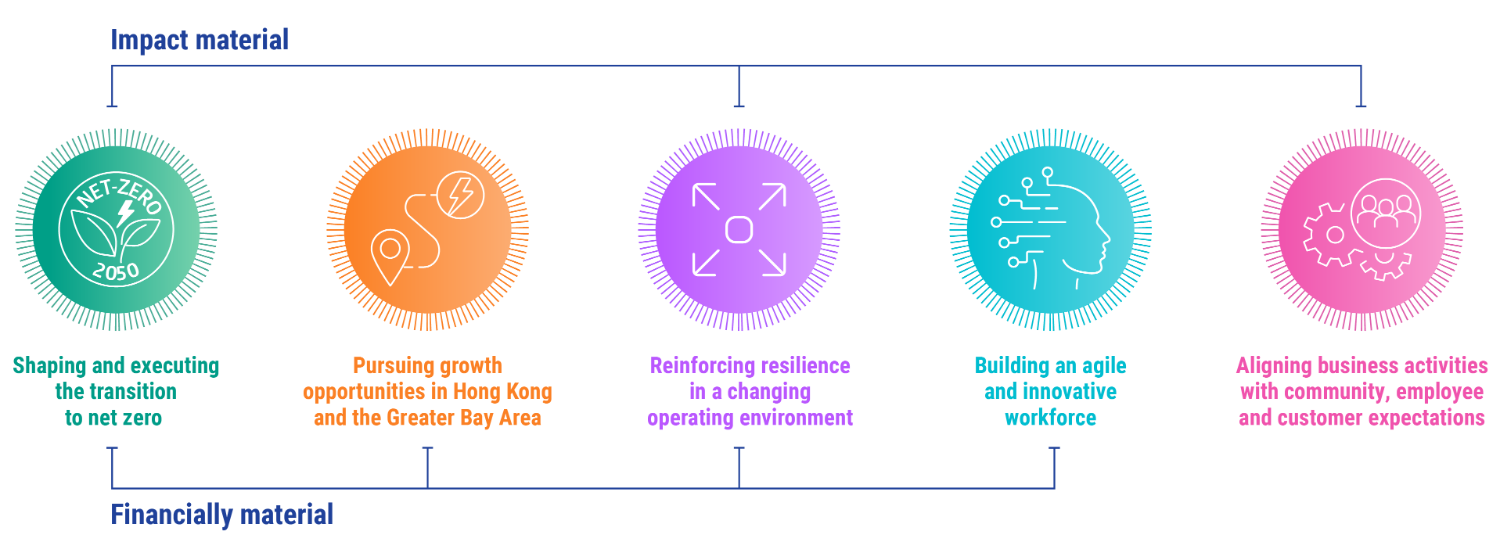Double materiality
CLP’s double materiality assessment prioritises financially material and impact material topics. Assessment results inform the content of the Annual Report and Sustainability Report.
In 2018, CLP updated its approach to materiality assessment, with subsequent annual reviews conducted to confirm result validity. Topics have been updated to address the impacts of immediate challenges arising from COVID-19, geopolitics and other developments that have unfolded since.
The current assessment uses the widely-adopted reporting frameworks from the GRI Standards and the Value Reporting Foundation, and also draws from the latest thinking in sustainability disclosure, including:
- Applying Enterprise Risk Management to Environment, Social and Governance-related Risk Guidelines, published by the Committee of Sponsoring Organizations of the Treadway Commission (COSO) and the World Business Council for Sustainable Development (WBCSD) in October 2018;
- Reporting on Enterprise Value: Illustrated with a Prototype Climate-Related Financial Disclosure Standard published by CDP, CDSB, GRI, IIRC, SASB in December 2020; and
- Proposals for a Relevant and Dynamic EU Sustainability Reporting Standard-setting, published by the European Reporting Lab (EFRAG) in February 2021.
In 2021, to reflect the maturity and integration of sustainability in the Company’s strategy and global best practice in reporting, in compiling its 2021 Annual Report and 2021 Sustainability Report, CLP applied a double materiality assessment to inform the focus of each report.
Formally proposed by the European Commission in Guidelines on Non-financial Reporting: Supplement on Reporting Climate-related Information in June 2019, the concept of double materiality encourages a company to judge materiality from two perspectives: firstly, the impact on the financial value of the company; and secondly, the environmental and social impact on a broad range of stakeholders. The concept also implies the need to assess the interconnectivity of the two.
The application of a double materiality assessment to CLP’s reports saw:
- Financially material topics, which create or erode enterprise value, covered in the Annual Report. The key audience is providers of financial capital.
- Impact material topics, which reflect significant positive or negative impacts on people, the economy, and the environment, covered in this Sustainability Report. They address the concerns of a diverse range of stakeholders wanting to understand CLP’s positive and negative contributions to sustainable development.
These topics are summarised in the diagram below. The Annual and Sustainability Reports feature cross-references that show the interconnectedness between financial and impact material topics and CLP’s overall focus on creating value for the both shareholders and wider stakeholders.



